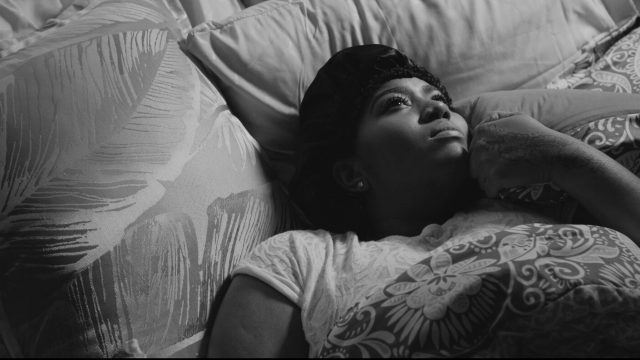Alone (2017) dir. Garrett Bradley
Filmmaking is the manipulation of time. In “Alone” and Time, the feature film that would take up the thread of this short, director Garrett Bradley depicts the time spent by people waiting for the return of incarcerated loved ones.
The legal conversations featured clearly aren’t the first and will be far from the last. Alone’s body languishing in idleness or moves to a dance beat, dresses for court or auditions a wedding dress. It’s all the same when done in a limbo. Bradley chooses not to make the camera present in the room for the film’s biggest outburst, when Alone tells her mother she plans to marry Desmond in prison. In addition to allowing the scene to play without being altered by the presence of cameras, the technique also focuses the anger as it affects Alone, and how it colors the time she spends waiting for her decision to play out.
The film doesn’t make an explicit argument against the disproportionate incarceration of black Americans, nor does it spell out the details of Desmond’s crime or sentence. The closest the film comes to a specific argument are the words of Fox Rich, the main subject of Time. Like that film, “Alone” captures a section of one person’s life in clear, aching black-and-white photography and lyrical editing to make the minutes stretch with their burden, brimful with the hopes and sadness of her subjects.
Journalistic details are helpful and necessary when discussing systemic problems, but data does not convey experience in the way art can. Knowing that prison sentences are disproportionate in black communities is not the same as feeling the absence of a loved one serving one of those sentences. Bradley captures this pain on camera by converting it to time.


